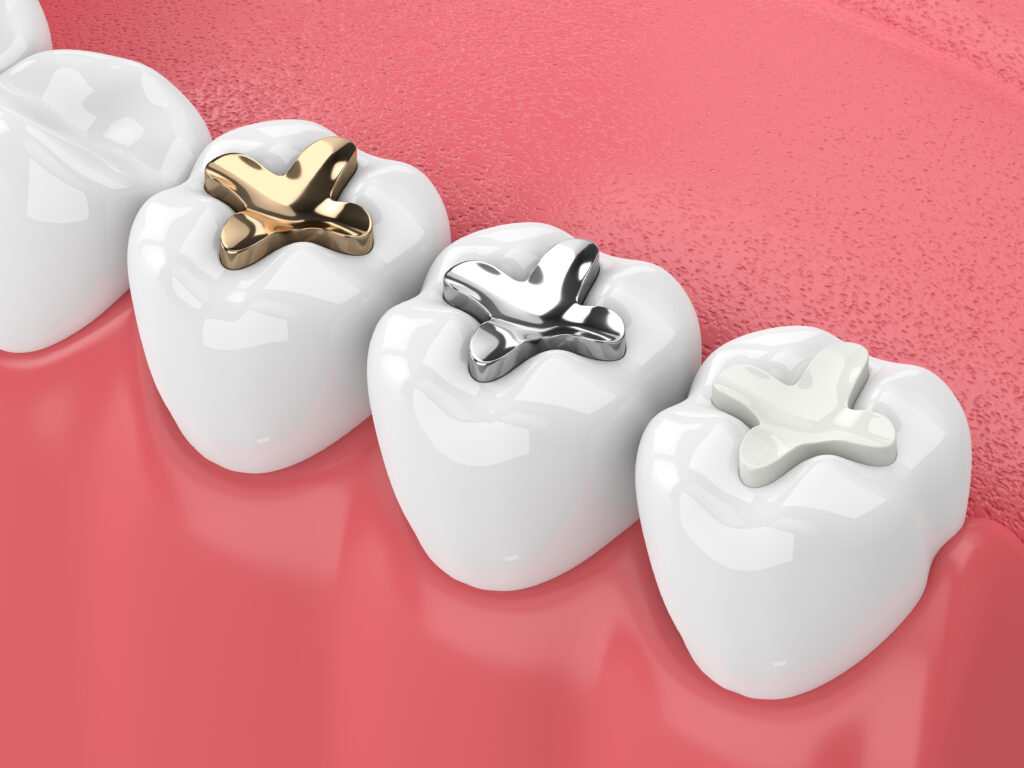

The Pros And Cons of Dental Inlays And Onlays: Making The Right Choice For You
Have you ever had a toothache and wondered about the treatment options available?
Among many restorative dentistry procedures, dental inlays and onlays often emerge as suitable choices for many patients. These ‘indirect fillings’ effectively solve various dental dilemmas, offering numerous advantages along with some caveats.
Let’s examine the process, benefits, potential drawbacks, and how they compare to other dental restorative methods, such as fillings and crowns.
Understanding dental inlays and onlays
In dentistry, inlays and onlays serve as middle-ground solutions, typically used when a tooth is too damaged for a traditional filling but not damaged enough for a dental crown.
In essence, they strive to retain as much of the existing natural tooth as feasible, thus emphasizing the more conservative approach of modern dentistry.
Getting dental inlays and onlays
Are you curious about the procedural steps involved in getting inlays or onlays?
It’s a two-visit process typically carried out at your dental home.
During the initial visit, your dental expert meticulously prepares the affected tooth and takes a precise impression. This impression is then forwarded to a dental laboratory, where the inlay or onlay is fabricated to match your tooth perfectly.
During the subsequent appointment, the dental expert will carefully affix the inlay or onlay to your tooth, ensuring a seamless fit and improved functionality.
The pros of dental inlays and onlays
What makes inlays and onlays a desirable choice?
Let’s shed some light on this:
- Durability: Crafted from robust, superior-quality materials like porcelain or composite resin, inlays and onlays boast remarkable durability. If you adhere to good oral hygiene practices, they can last up to three decades!
- Conservation of natural tooth: The primary goal of any dental expert while placing inlays and onlays is to remove only the affected parts of the tooth, leaving the healthy structure intact. It’s a triumph for tooth conservation!
- Custom-fit: Unlike conventional fillings, inlays, and onlays are tailor-made to fit your tooth precisely. This customization ensures a comfortable, secure fit and enhances the final aesthetic result.
The cons of dental inlays and onlays
Inlays and onlays, while beneficial, come with certain limitations:
- Cost: Their higher cost than regular fillings is primarily due to their tailor-made nature and high-quality materials.
- Procedure time: Being custom-made means that the process necessitates two visits to the dental office, which might be inconvenient for some.
- Potential for sensitivity: Like other dental procedures, inlays and onlays may cause temporary sensitivity to hot and cold.
Dental inlays and onlays vs. other treatments
How do you choose between inlays and onlays, fillings, and crowns?
Dental inlays and onlays vs. dental fillings
Compared to fillings, inlays and onlays are more resilient, owing to their sturdy material, which is more vital than composite, and their better fit ensures enhanced longevity.
Nonetheless, they are pricier and require more time to be placed.
Dental inlays and onlays vs. dental crowns
While crowns are suitable for substantially damaged teeth, they require removing a more significant amount of tooth structure.
In contrast, inlays and onlays are more conservative, allowing more of the natural tooth to be preserved.


Making the right choice for you
The final decision should consider your financial resources, the extent of tooth damage, and your dental professional’s advice.
Essentially, it’s a delicate balance of weighing the benefits against the disadvantages to select the most suitable treatment for you.
FAQs
What is the typical lifespan of dental inlays and onlays?
Dental inlays and onlays can last up to 30 years with meticulous care.
Are dental inlays and onlays painful?
While the procedure itself is not painful due to the administration of local anesthesia, some patients may experience transient sensitivity post-procedure.
Do inlays and onlays require special care?
No. Simply continue your regular oral hygiene routine – brushing twice daily and flossing daily will suffice.
Does insurance cover inlays and onlays?
This largely depends on your specific dental insurance plan. Some plans may cover some of the cost, while others may not.
Can inlays or onlays fall out?
Though infrequent, inlays and onlays can become loose or even fall out. If this happens, it is essential to contact your dental office immediately.
In a nutshell
Dental inlays and onlays are highly effective in restoring damaged teeth, striking a balance between conventional fillings and crowns.
They may not be the ideal choice for everyone, but understanding their merits and limitations will empower you to make an educated decision.
Avalon Family Dentistry is located in Federal Way, WA, and we happily welcome folks from neighboring areas.
